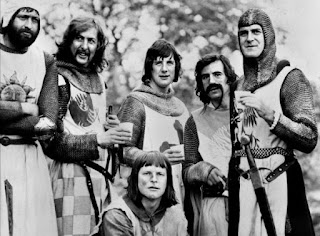I recently read a very thought provoking (and practical) article that had been passed along to me by a bright young architect and colleague. The article, "Practice Matters" by Andrew Pressman (FAIA), appeared in the 04/2009 volume of Architectural Record.
The article explores the importance of teamwork in the architectural practice and then goes on to explain how it can be fostered. As I read the article, I kept going back to my own professional pursuits in the area of photographic art, and although I generally work "alone," much of what was being related seemed germane to my own creative work. How could creative teamwork have anything to do with me? I finally realized what was going on.
 |
| Collaboration of a Dark and Aged Sort (more on this in a follow-on article) |
When I leave the studio and visit a potential site for creative work, there are at least three entities that end up being involved the process. The most obvious one is myself. If I am not involved, there simply is no creative process at work. This may seem like a trivial matter not even worth discussing, but there really is something important to consider here. My words here– "If I am not involved..."– describe the issue precisely. For anything significant to occur, I must be involved. Simply showing up is of no profit. I have to be fully engaged in the process, open to what is going on around me (as well as within me), and ready to change course in a moment's notice if required. This is a very dynamic and active process for the individual artist.
The second entity is not quite as obvious, but it certainly comes to mind if you think about it just a little. This would be the subject. When the creative matter at hand is portraiture, it is pretty obvious that the subject is an entity with whom the creative agent can and needs to communicate and relate on a very personal level. Generally, the deeper and richer the communication is between these two, the deeper and richer the potential creative result can be.
If the image to be made is not a portrait, the subject is less likely to be engaged in an interactive relationship. Here, the subject (architecture, landscape, abstract, or other) will mostly be involved in one-way communication (speaking, not listening), but just because it's one-way, doesn't mean you shouldn't be fully engaged with it. In fact, this makes it even more important for the artist to listen carefully, and to look closely in order to discover what the subject is saying. And even then, it can be helpful for the artist to verbalize their own response to what they believe the subject is saying. Speaking these thoughts out loud can even clarify what is transpiring internally in you (yes, people may whisper about you if they witness this, but so what?!).
And this brings us to the third entity. What could be more stimulating, and more productive for an artist than to collaborate with the One Who is, in fact, the ultimate Creator? So often the Creator is given short shrift in the creative process, but we do so to our own detriment. The Creator did not simply finish His active creating in the beginning and then retire for the remainder of eternity. He may have "rested" for a day, but then His activity began again in ernest.
As we are involved in the process of creating art (or any other creative activity) it is of high significance to seek personal communication and relationship with the One Who created all. And as with any personal relationship, we cannot make it happen on our own. All we can do is simply seek the relationship and be open to it. It is His prerogative to invite us into His sphere, His initiative to give us the incredible benefits of His thoughts, and His power and gifts to enable us to create worthy art.
This is collaboration taken to the ultimate degree. If you want to know what creativity is all about, spend some time with the Creator.
On a final note, this post itself is an interesting example of some of the details offered in Pressman's article mentioned above. In my next entry here, I'll flesh this out a little more (see the image above for a hint)...
No comments:
Post a Comment